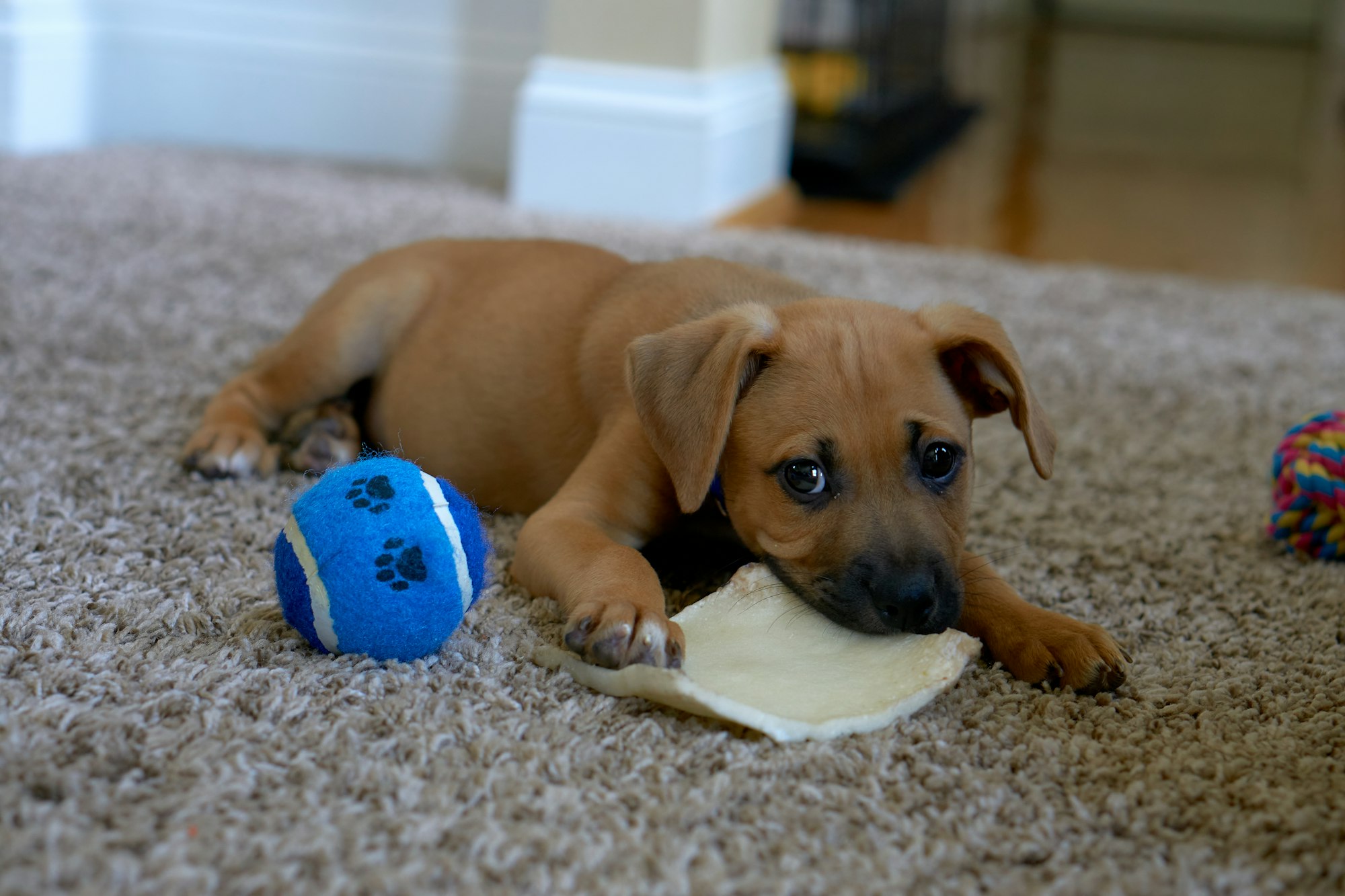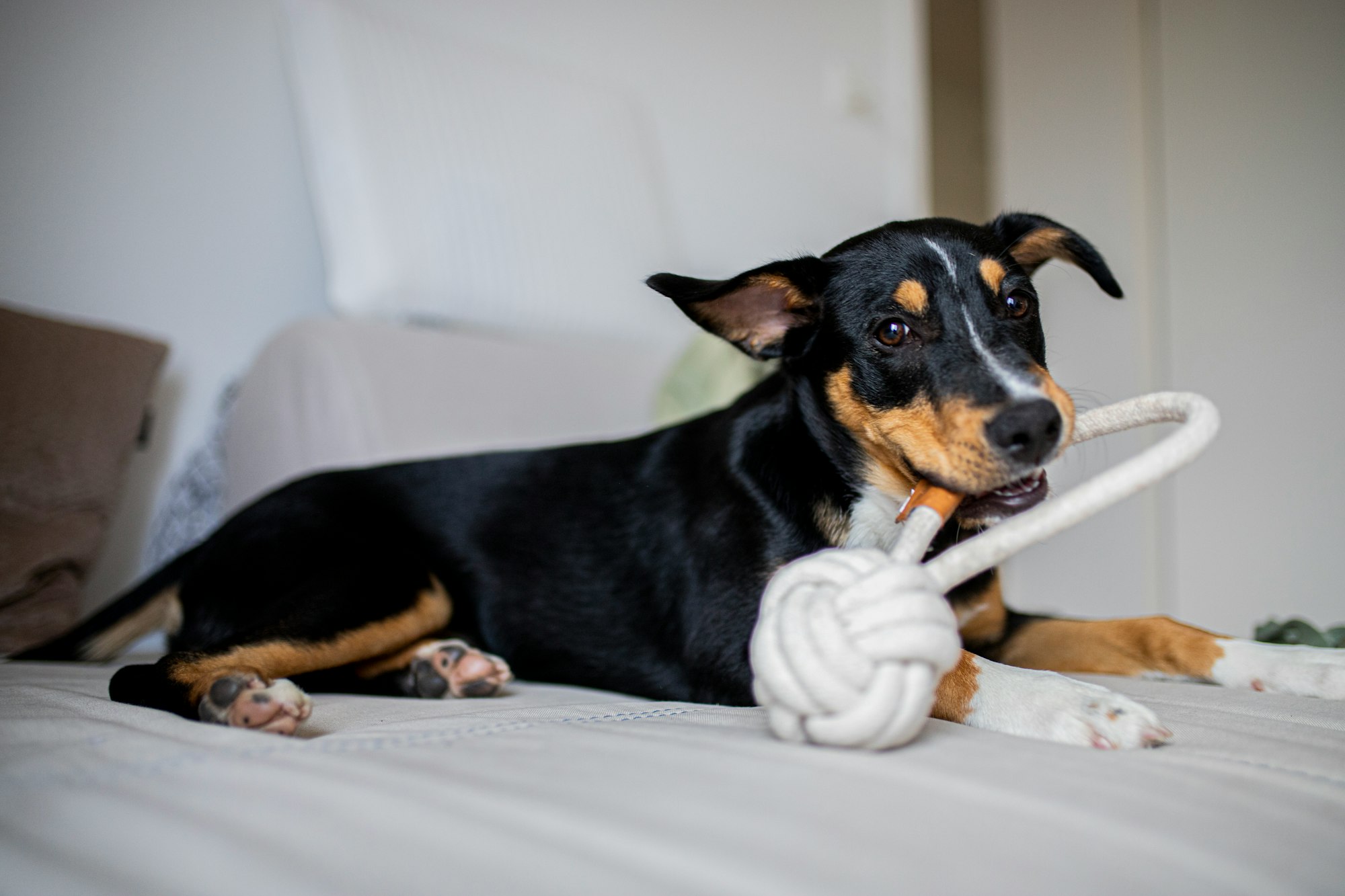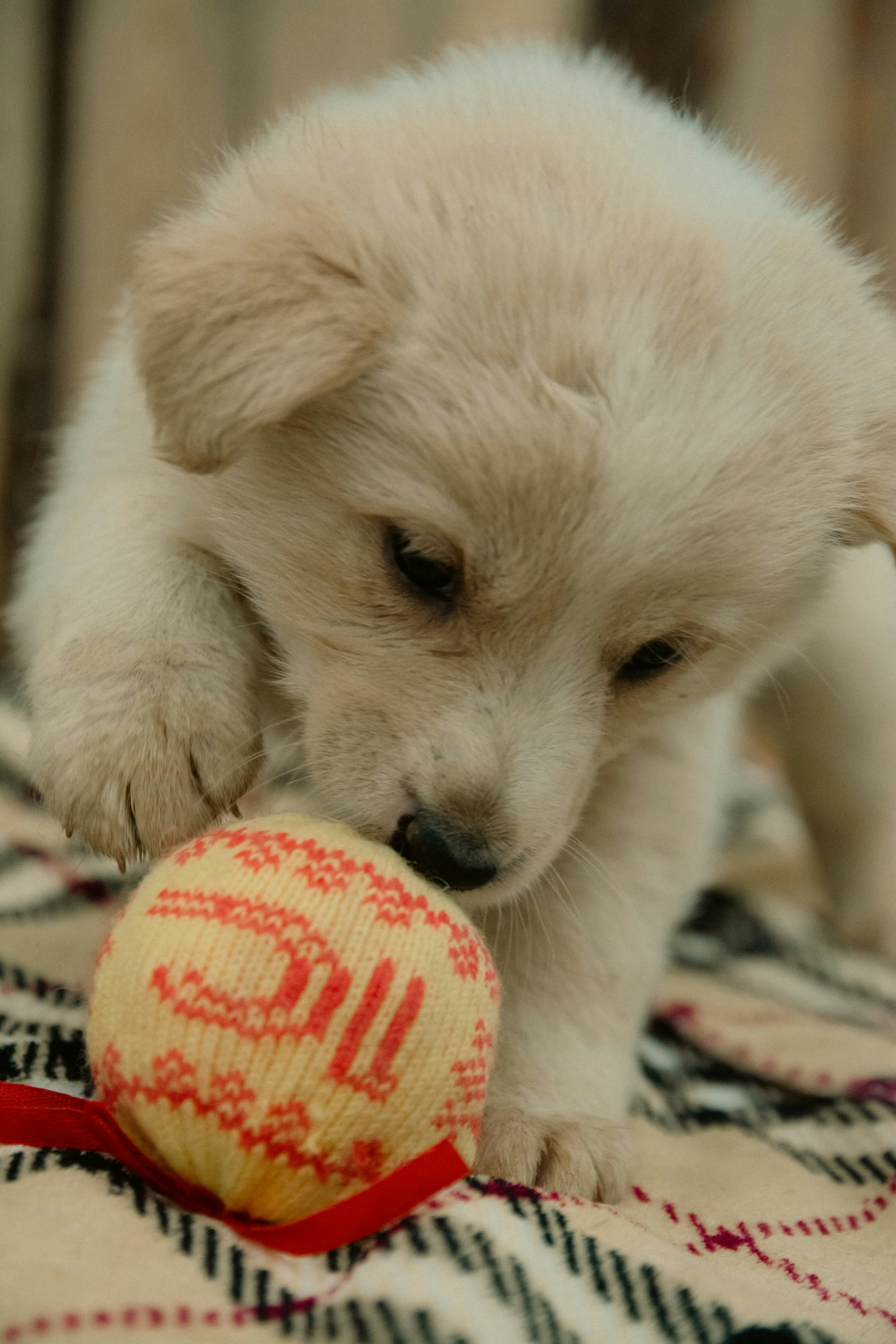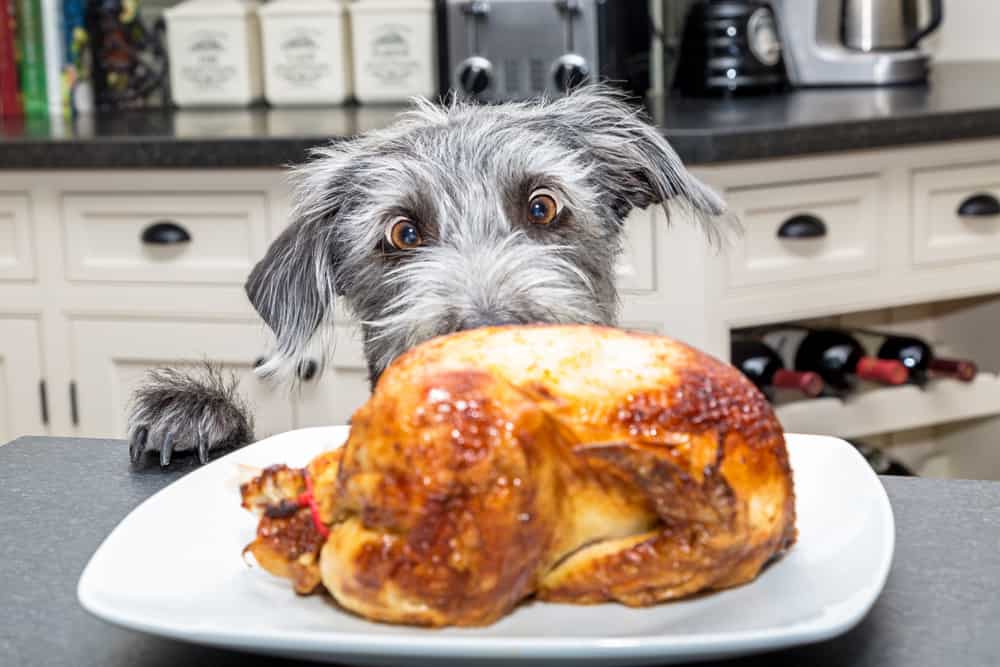In today's busy world, finding time to take your dog outdoors for exercise can be a challenge. Whether it's due to bad weather, limited space, or other commitments, there are times when indoor exercise is the only option. However, it's essential to keep your furry friend physically and mentally stimulated to maintain their health and happiness. In this guide, we'll explore effective ways to exercise your dog indoors.

The Importance of Indoor Exercise for Dogs
Indoor exercise plays a crucial role in maintaining the health and happiness of our canine companions. While outdoor activities are essential, there are times when indoor exercise becomes necessary. Understanding why indoor exercise is important for dogs can help you make it a regular part of your furry friend's routine.
Physical Health
- Weight Management: Indoor exercise helps dogs burn calories, preventing obesity, which can lead to various health issues.
- Joint Health: Regular indoor activity can support joint health, especially in older dogs or those with joint problems.
- Cardiovascular Health: Activities like indoor fetch or running up and down stairs contribute to a healthy heart and improved circulation.

Mental Stimulation
- Preventing Boredom: Dogs that lack mental stimulation indoors may become bored, leading to destructive behavior.
- Cognitive Development: Puzzle toys and training exercises stimulate their minds, enhancing cognitive development.
- Behavioral Benefits: Regular indoor exercise can reduce anxiety and excessive barking by providing an outlet for pent-up energy.
Weather and Safety
- Extreme Weather: Harsh weather conditions, such as extreme heat, cold, or storms, may make outdoor exercise unsafe. Indoor exercise offers a safe alternative.
- Safety from Hazards: Indoor exercise eliminates the risk of your dog encountering dangerous substances or objects outdoors.
Creating a Safe Exercise Space
Before engaging in indoor exercise with your dog, it's essential to ensure that the environment is safe for both your pet and your home. Creating a secure exercise space indoors involves several considerations.
Setting Boundaries
- Designated Area: Determine a specific area where your dog can play and exercise. This helps them understand where it's acceptable to be active.
- Use Baby Gates: Baby gates or pet barriers can be useful for restricting access to certain rooms or areas of your home.
- Clear Communication: Use verbal commands to reinforce boundaries and teach your dog where they should and shouldn't go.
Removing Hazards
- Toxic Substances: Identify and remove any toxic substances, such as chemicals, plants, or foods, from the exercise area.
- Small Objects: Keep small objects out of reach to prevent choking hazards.
- Secure Wires and Cords: Tuck away or secure electrical wires and cords to prevent your dog from chewing on them.
- Furniture Safety: Ensure that furniture or other items in the exercise area are stable and won't fall over during play.
Fun Indoor Exercise Ideas
Engaging your dog in fun indoor exercise activities is not only enjoyable for them but also essential for their physical and mental well-being. Here are some creative ideas to keep your furry friend active and entertained indoors:
Hide and Seek
- Game Setup: Have your dog stay in one room while you hide in another part of the house.
- Calling Your Dog: Call your dog's name and encourage them to find you. Use an excited and cheerful tone.
- Rewards: When your dog successfully finds you, reward them with treats and praise.
- Variations: You can take turns hiding or hiding their favorite toys for an added challenge.
Tug of War
- Safety First: Ensure that you use a sturdy rope toy designed for this game, and establish rules to play gently.
- Engage: Hold one end of the rope and invite your dog to grab the other. Gently tug back and forth.
- Rules: Teach your dog to release the toy on command to maintain control.
- Physical Activity: Tug of War engages your dog's muscles and can be a great energy burner.
Puzzle Toys
- Interactive Toys: Invest in puzzle toys that dispense treats when your dog figures out how to manipulate them.
- Mental Stimulation: These toys not only provide physical exercise but also challenge your dog's problem-solving skills.
- Variety: There's a wide variety of puzzle toys available, from simple treat balls to more complex ones that require multiple steps to unlock.
Interactive Playtime
Interactive playtime is an excellent way to bond with your dog while keeping them physically and mentally engaged. Here are some activities that both you and your furry friend can enjoy:
Fetch with Soft Toys
- Indoor Space: Choose a spacious area indoors where you can safely play fetch without breaking anything.
- Soft Toys: Use soft, lightweight toys or even rolled-up socks as fetch items to prevent damage.
- Short Throws: Opt for short throws to avoid overexertion in smaller spaces.
- Reward: Always reward your dog when they bring the toy back to you.
Obstacle Course
- DIY Course: Create a mini obstacle course using cushions, tunnels, and low hurdles.
- Guidance: Guide your dog through the course, offering treats and praise for completing each challenge.
- Safety: Ensure that the obstacles are stable to prevent accidents.
Interactive playtime not only provides physical exercise but also strengthens the bond between you and your dog. These activities are particularly useful on days when outdoor exercise isn't possible due to weather or other constraints.
Mental Stimulation Exercises
Mental stimulation exercises are as vital for your dog's well-being as physical activity. These activities challenge your dog's intelligence, problem-solving abilities, and cognitive skills. Here are some mental stimulation exercises to keep your dog sharp and engaged indoors:
Training Sessions
- Basic Commands: Use indoor time to reinforce basic commands like sit, stay, and lie down.
- New Tricks: Teach your dog new tricks, such as rolling over, giving a paw, or playing dead.
- Positive Reinforcement: Use treats and positive reinforcement to reward your dog's success.
- Short Sessions: Keep training sessions short and fun to prevent your dog from becoming overwhelmed.
Treat Dispensers
- Interactive Dog Toys: Invest in treat-dispensing toys like Kong or puzzle feeders.
- Mental Challenge: Fill these toys with your dog's favorite treats or kibble, challenging them to figure out how to get the rewards.
- Puzzle Feeders: Puzzle feeders require your dog to manipulate the toy to access the hidden treats, providing mental stimulation.
- Mealtime Fun: You can even use puzzle feeders as a way to make mealtime more engaging.
Utilizing Technology
Technology can be a valuable tool in keeping your dog mentally and physically active indoors. Here are ways to utilize technology for your dog's benefit:

Dog Exercise Apps
- Choose Appropriate Apps: Explore dog exercise apps that offer guided workouts and challenges tailored to your dog's breed and fitness level.
- Interactive Games: Some apps have interactive games designed to keep your dog engaged and active.
- Progress Tracking: Many apps allow you to track your dog's progress and set exercise goals.
- Social Engagement: Connect with other dog owners through these apps, sharing tips and experiences.
Dog-Friendly Videos
- Visual Stimulation: Play dog-friendly videos featuring birds, squirrels, or other animals.
- Engage Their Instincts: Many dogs enjoy watching these videos and may even "chase" the virtual prey on the screen.
- Limit Screen Time: While these videos can be entertaining, ensure you don't overdo screen time for your dog.
Maintaining Consistency
Consistency is a key factor in ensuring the effectiveness of your indoor exercise routine for your dog. Here are some tips on how to maintain consistency in providing your furry friend with regular indoor exercise:
- Establish a Routine: Dogs thrive on routines, so set a consistent schedule for indoor exercise. Try to exercise your dog at the same times each day.
- Stick to the Plan: Once you've established a routine, stick to it. Consistency helps your dog know when to expect playtime, reducing separation anxiety and restlessness.
- Combine Activities: Vary the types of indoor exercises you engage in, but keep the timing consistent. For example, you can have a training session in the morning and interactive playtime in the evening.
- Weather Contingency: Use indoor exercise as a reliable alternative to outdoor activities during unfavorable weather conditions.
- Enlist Help: If your schedule is busy, consider enlisting the help of a family member or a dog walker to ensure your dog receives regular indoor exercise.
- Adapt to Your Dog: Pay attention to your dog's energy levels and preferences. Adjust the intensity and duration of indoor exercise to suit their needs.
Signs of a Happy, Well-Exercised Dog
When your dog is well-exercised and content, they exhibit specific signs and behaviors. Recognizing these signs can help you gauge the success of your indoor exercise routine:
- Wagging Tail: A wagging tail is a classic sign of a happy dog. It signifies excitement and joy.
- Relaxed Body Language: A well-exercised dog tends to have a relaxed body posture, with loose muscles and lowered ears.
- Satisfied Demeanor: Your dog will appear content and satisfied after a good exercise session, often settling down for a rest.
- Improved Behavior: Regular exercise can lead to improved behavior, including reduced instances of destructive chewing or excessive barking.
- Healthy Appetite: A well-exercised dog usually has a healthy appetite, demonstrating that they're in good physical condition.
- Restful Sleep: Dogs that receive adequate exercise tend to sleep more soundly and peacefully.
- Bonding and Interaction: Well-exercised dogs are more likely to engage in positive interactions with their owners, seeking attention and playtime.
- Alertness: Mental stimulation exercises contribute to increased alertness and responsiveness in your dog.
Common Mistakes to Avoid
While providing indoor exercise for your dog is essential for their well-being, there are common mistakes that pet owners should avoid to ensure a safe and enjoyable experience for both you and your furry friend. Here are some key pitfalls to watch out for:

1. Over-Exercising
Mistake: Overexerting your dog indoors can lead to fatigue, muscle strain, and even injury.
Solution: Be mindful of your dog's energy levels and fitness. Tailor the intensity and duration of indoor exercise to match their capabilities.
2. Lack of Supervision
Mistake: Leaving your dog unattended during indoor exercise can result in accidents or destructive behavior.
Solution: Always supervise your dog during playtime. This ensures their safety and allows you to intervene if necessary.
3. Inadequate Safety Precautions
Mistake: Neglecting to childproof the indoor exercise area can lead to hazards for your dog.
Solution: Remove potential dangers like toxic substances, small objects, and unstable furniture. Ensure a safe environment for play.
4. Ignoring Fresh Water
Mistake: Failing to provide access to fresh water during indoor exercise can lead to dehydration.
Solution: Always have a bowl of clean water available for your dog, especially if the exercise is vigorous.
5. Skipping Warm-Up and Cool-Down
Mistake: Not incorporating warm-up and cool-down routines can strain your dog's muscles.
Solution: Start exercise sessions with gentle warm-up activities like walking, and end with a cool-down period to allow your dog's heart rate to return to normal.
6. Inadequate Mental Stimulation
Mistake: Focusing solely on physical exercise without mental stimulation can lead to boredom.
Solution: Incorporate mental stimulation exercises, such as training sessions or puzzle toys, to engage your dog's mind.
7. Using Inappropriate Toys
Mistake: Using toys that are not designed for indoor play can result in damage to your home or injury to your dog.
Solution: Choose soft or non-destructible toys for indoor play to minimize the risk of accidents.
8. Disregarding Age and Breed
Mistake: Not considering your dog's age and breed can lead to inappropriate exercise choices.
Solution: Research your dog's breed and consult with a veterinarian to determine suitable indoor exercises, especially for puppies and senior dogs.
9. Lack of Variety
Mistake: Repeating the same indoor exercise routines can lead to boredom.
Solution: Keep indoor exercise interesting by rotating activities and introducing new challenges to prevent monotony.
10. Neglecting Behavioral Training
Mistake: Not using indoor exercise as an opportunity to reinforce good behavior can result in behavioral issues.
Solution: Use training sessions during indoor exercise to reinforce obedience and reward positive behavior.
By avoiding these common mistakes, you can ensure that your indoor exercise sessions with your dog are not only enjoyable but also safe and beneficial for their physical and mental health.

Conclusion
Exercising your dog indoors can be enjoyable and beneficial for both you and your furry companion. By following these tips and being creative, you can keep your dog physically and mentally stimulated, even when outdoor exercise isn't an option.
FAQs
- Q1. Can I use a laser pointer to exercise my dog indoors?
While laser pointers may seem like a fun indoor exercise tool, they can frustrate dogs when they can't "catch" the light. It's better to opt for interactive games or toys that provide tangible rewards.
- Q2. How much indoor exercise does a dog need each day?
The amount of indoor exercise varies depending on your dog's age, breed, and energy level. On average, 30 minutes to an hour of indoor exercise per day is suitable for most dogs.
Q3 What are some safety precautions for indoor dog exercise?
Ensure the exercise area is free of hazards, supervise playtime, and choose age-appropriate toys to prevent accidents and injuries.
- Q4. Are there specific indoor exercises for different dog breeds?
Yes, some breeds have specific exercise needs. Research your dog's breed to determine exercises that cater to their unique characteristics.
- Q5 How can I prevent my dog from getting bored during indoor exercise?
Rotate activities regularly to keep things interesting, use treat-dispensing toys, and engage in interactive play to prevent boredom during indoor exercise.






